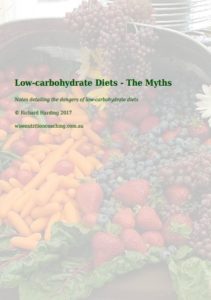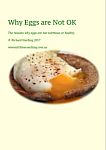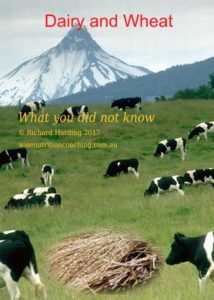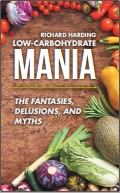TIME Magazine Article – Eat Butter
It is with alarm that I read Bryan Walsh’s article Ending the War on Fat that was published in TIME magazine on 23 June 2014. 1 According to Walsh,
If the book has really been “referenced close to a million times”, it means that it has been referenced close to 80 times every day, including weekends, since the book was published in 1980.
Walsh claims that Keys “cherry-picked” his data. It is evident that Walsh has confused with Keys’ 1953 paper Keys’ paper, Atherosclerosis, A Problem in Newer Public Health and his later study Seven Countries, A Multivariate Analysis of Death and Coronary Heart Disease.
Keys collaborated with a number of highly regarded researchers, people who spoke the native language of the areas studied. He lists 15 collaborators in the Seven Countries book. According to Henry Blackburn, 2
Paul Dudley White was a highly regarded and renowned cardiologist and is frequently viewed as a leader in preventive cardiology.
TIME magazine article contends that Keys manipulated data for his own purposes and at the same time managed to deceive for decades his collaborators who actually collected the data.
Popular commentators frequently falsely accuse Keys of manipulating data in his 1953 paper, Atherosclerosis, A Problem in Newer Public Health. In this paper, Keys lists death rates from 16 countries for the period 1947-1949. He excludes some of this data for reasons that are explained.
Jacob Yerushalmy and Herman Hilleboe examined the data from 22 countries (33 were available) in the WHO Epidemiological and Vital Statistics 1951-1953 publication. The results were published in their paper Fat in the diet and mortality from heart disease. In this paper, Yerushalmy and Hilleboe criticise Keys for excluding data in his considerations. Note that Keys’ paper was presented in January 1953. An earlier version was presented several months earlier in Amsterdam. Yerushalmy and Hilleboe used World Health Organisation data from the years 1951-1953. Does it need to be explicitly stated that Keys’s paper was written long before the WHO data was available?
Please, please note that even if data from all the 22 countries are included, it still shows:
- positive correlations between heart disease and calories consumed, fat consumption, animal fat consumption, animal protein consumption and
- negative correlations with heart disease and carbohydrate consumption, vegetable protein consumption, vegetable fat consumption.
Norman Jolliffe and Morton Archer wrote a paper, Statistical associations between international coronary heart disease death rates and certain environmental factors. (Journal of Chronic Diseases 9 No 6, 1959) that examined Yerushalmy and Hilleboe’s conclusions. Jolliffe and Archer state that Yerushalmy and Hilleboe erred in disregarding the distinction between saturated fat and polyunsaturated fat. This distinction was not known when Keys wrote his original paper.
Jolliffe and Archer state that,
According to Walsh:
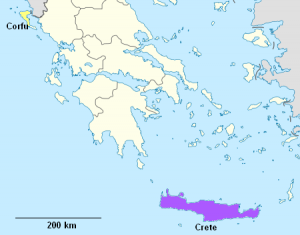 Corfu and Crete are separated by over 600 km of ocean and dozens of islands – it is not a neighbouring island. 3 Surveys for the Seven Countries Study were conducted in Greece in 1960 and 1965. This is clearly not in the years immediately following World War II. It is false to state that the diet was “artificially lean”. It is simply not true that “almost no cheese or meat” was eaten.
Corfu and Crete are separated by over 600 km of ocean and dozens of islands – it is not a neighbouring island. 3 Surveys for the Seven Countries Study were conducted in Greece in 1960 and 1965. This is clearly not in the years immediately following World War II. It is false to state that the diet was “artificially lean”. It is simply not true that “almost no cheese or meat” was eaten.
| Cohort | Meat (g/day) | Fish (g/day) | Eggs (g/day) | Cheese (g/day) | Milk (g/day) |
|---|---|---|---|---|---|
| Crete | 35 | 18 | 25 | 13 | 235 |
| Corfu | 35 | 60 | 5 | 14 | 70 |
Significant differences in Cretan and Corfu diet include egg, fish, alcohol, milk, cereal and potato consumption, which is ignored in Walsh’s article. There is also a difference in smoking habits which is also ignored in Walsh’s article. 4
Walsh claims that people of Corfu ate far less saturated fat than the Cretans. Where did this information come from? Below is a comparison of data from Crete, Corfu and East Finland with 10-year death rates. 5
| Cohort | Sample Size | All Causes Deaths | All Causes Death Rate | CHD Deaths | CHD Death Rate | Fat % | Saturated Fat % |
|---|---|---|---|---|---|---|---|
| Crete | 686 | 42 | 656 | 1 | 9 | 39 | 8 |
| Corfu | 529 | 43 | 833 | 8 | 144 | 33 | 7 |
| East Finland | 817 | 147 | 1864 | 78 | 992 | 38 | 22 |
CHD – Cardiac Heart Disease; Aged Standardised Death Rate per 10,000
The amount of saturated fat consumed was very similar. Cretans ate more fat, in the form of olive oil.
The number of heart disease deaths for both Crete and Corfu were very low.
The focus on any one component of a diet such as saturated fats or sugars is misleading.
Ancel Keys coined the name and introduced the concept of Mediterranean diet In 1975, Ancel Keys and his wife Margaret published the book How to Eat Well and Stay Well the Mediterranean Way (New York, NY: Doubleday & Co; 1975) based on the results of his studies. This diet was based on the diets of Greece, southern Italy and the Mediterranean coasts of France and Spain in the 1960s.
According to Keys,
A Mediterranean diet or a Whole Food Plant-Based diet as practiced by societies that are longest lived and healthiest is, by it’s nature, low in fats, saturated fats, animal protein and high in carbohydrate, antioxidants, dietary fibre, vitamins, minerals and the many other micro nutrients that are essential for our well being.
There is a reference in Walsh’s article to papers by Patty Siri-Tarino and Rajiv Chowdhury. Walter Willet, Frank Hu, Stewart Truswell and Jeremiah Stamler have raised serious concerns regarding the conclusions of these papers. In some cases, Siri-Tarino and Chowdhury have managed to draw the opposite conclusions to the facts presented in the original papers that they reference.
Unfortunately, these papers are now referenced by popular commentators to encourage people to continue eating unhealthy diets.
Much of this poorly researched article is based on popular books and does not stand up to scrutiny. Many popular books confuse the Seven Countries Study with the earlier 1953 paper.
A number of “experts” quoted in the article are supporters of the Atkins Foundation, promoters of a high fat, low carbohydrate diet that has been shown to be a considerable health risk. Stephen Phinney, Jeff Volek and Eric Westman are authors of The New Atkins for a New You, written on behalf of Atkins Nutritionals, an organisation committed to “groundbreaking work in the area of low-carb living.”
Robert Atkins died at the age of 72, obese and with a history of cardiac problems.
According to a review in 2003 review in the Journal of the American College of Nutrition,
Bryan Walsh has performed a great disservice to TIME magazine readers by presenting popular views that have now become “facts”.
Related articles
Ancel Keys and the High-Fat Diet “Experts”
Ancel Keys did not manipulate his data
Robert Lustig and the Men Who Made Us Fat
The Big Fat Surprise
TIME Magazine Article – Eat Butter – Part 2
Heart of the Matter – ABC Catalyst
The Pioppi Diet
Last updated on Monday 5 December 2022 at 22:12 by administrators
Footnotes
- Walsh, B. (2014) Don’t Blame Fat. TIME Magazine – 23 June 2014
- Blackburn, H. W. (1995) On the Trail of Heart Attacks in Seven Countries. Mine: University of Minnesota. [online]. Available from: Seven Countries Study (Accessed 3 June 2016)
- “Greece location map” by Lencer – own work, using United States National Imagery and Mapping Agency data. Licensed under CC BY-SA 3.0 via Wikimedia Commons – commons.wikimedia.org/wiki/File:Greece_location_map.svg#/media/File:Greece_location_map.svg
- Kromhout, A. Keys, M. Pekkarinen, and C. Aravanis, Food consumption patterns in seven countries American Journal of Clinical Nutrition 1988.
- Keys, C. Aravanis, H. Blackburn, R. Buzina, B. S. Djordjevic, and A. S. Dontas, “Seven Countries – A Multivariate Analysis of Death and Coronary Heart Disease.” Harvard University Press Cambridge, Massachusetts and London, England 1980 pp10, 65-67, 136, 252-253

